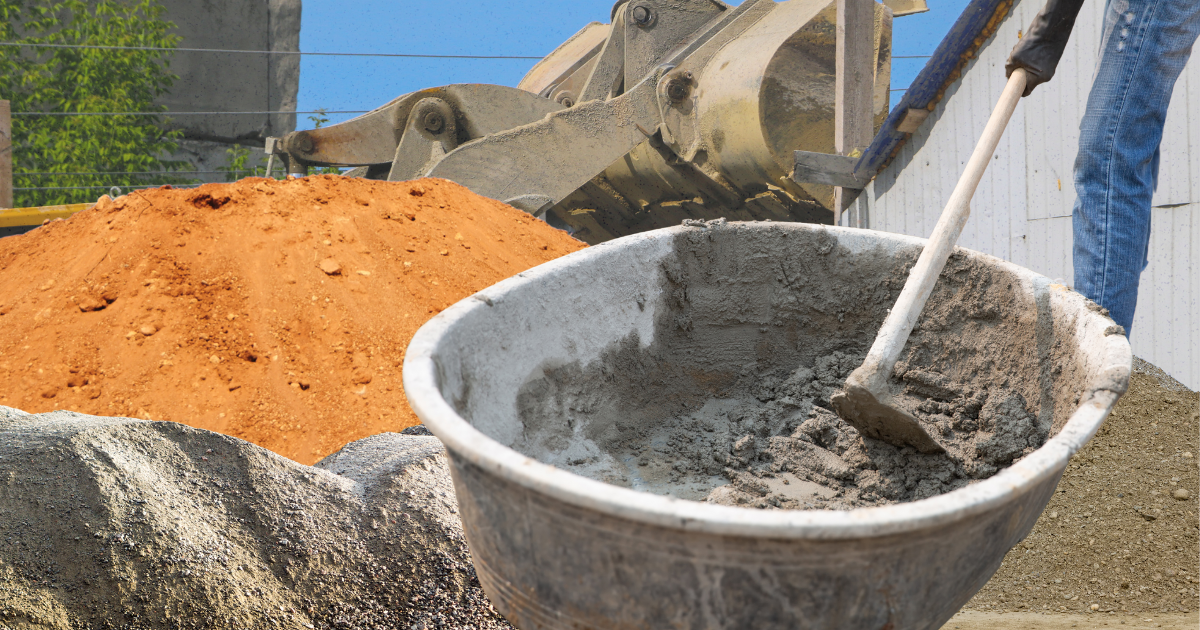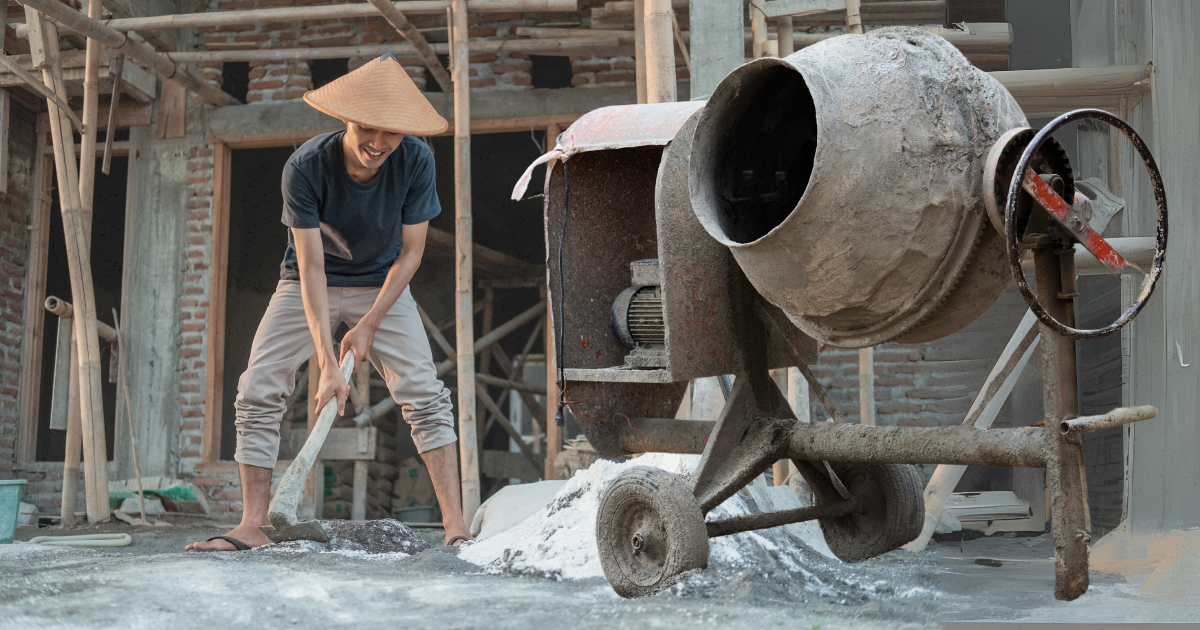When working on DIY concrete projects, getting the mix right isn’t just helpful. It’s essential for long-lasting results and solid structural support. Many builders tend to focus on cement, often overlooking the critical role that sand and gravel play in the outcome. These materials influence the texture, strength, and overall stability of the structure.
Cement acts as the binder, but it’s the sand and gravel that give the mix its form and strength. Without the proper ratio, concrete becomes prone to cracking or failure. Accurate measurements matter. Even small miscalculations can lead to disappointing results.
Whether it’s a simple pathway repair, a wall build, or post installation, the quality of your mix has a direct impact. In this article, we’ll discuss common concrete mix ratios, when each one works best, and how the right blend of sand and gravel supports a durable finish.

Understanding Aggregates
Understanding the role of each ingredient is key to creating the perfect cement mix. Sand and gravel play vital roles in ensuring your concrete is solid and smooth. Knowing how aggregates like sand and gravel contribute to the mix is essential for the success of any construction project.
Fine Aggregates (Sand)
Sand helps make your concrete smooth, workable, and easier to spread. You’ll usually come across three common types: river sand, masonry sand, and finely crushed quartz. Whichever one you use, sand fills the gaps between gravel and helps hold the mix together.
- River sand is naturally rounded, soft, and easy to mix, making it ideal for general-purpose concrete.
- Masonry sand is finer and more uniform, often used when you want a smoother finish, like in plastering or detailed work.
- Fine crushed quartz is rougher and more angular. It gives a better grip and can boost strength, but it’s harder to work with if you’re not used to it.
Coarse Aggregates (Gravel)
Coarse aggregates give concrete its strength and body. These are the bigger, chunkier materials in the mix. Common options include crushed gravel, stone chips, clinkers, and even coal in some local mixes. The type and size of your coarse aggregate will change how strong and textured your concrete turns out, so it’s worth choosing based on what your project needs.
- Crushed gravel and stone chips are popular for structural builds because they lock together well and reduce shrinkage.
- Clinkers, which are dense lumps from cement production, can also be reused in mixes when cleaned properly.
- Coal is less common today but still found in some traditional or budget mixes, though it can affect concrete quality.
Interested in a more in-depth look at the different types of concrete aggregates? Here’s a related read: The Importance of Aggregates for Concrete.
Why It They Matter In Your Project
Using the wrong type or the incorrect amount of sand and gravel can cause problems such as cracks, hollow spots, or weak areas in your concrete. Even if it looks fine at first, a poor ratio often leads to early deterioration. Accurately calculating and mixing aggregates helps prevent these issues, saving you time, money, and future repair work.
Common Concrete Mix Ratios and Their Uses
The most basic concrete mix ratio is 1:2:4, which follows the Cement:Sand:Gravel format. This format means that for every part of cement, there are two parts sand and four parts gravel. This standard mix requires consistency, just like most other ratios. It’s commonly used for general construction purposes such as house floors, driveways, and slabs.
Other mix ratios, still following the Cement:Sand:Gravel format, serve different purposes:
- 1:3:6—Suitable for lighter work like garden paths, fence posts, or structures that don’t need to bear heavy loads.
- 1:1.5:3—A stronger mix, ideal for structural elements like columns, beams, or any load-bearing parts of a building.
Tips for Measuring
Apart from carefully managing the ratios in your aggregate mix, it’s equally important to pay attention to the mixing process. Here are a few tips to help keep the process clean and ensure your mixes remain consistent.
- Use a consistent container: Stick to one size of container (like a timba or pail) for measuring each ingredient. Switching sizes leads to uneven mixes.
- Mix small batches first: Especially for new projects, try a test batch to check the texture, workability, and drying time.
- Keep aggregates clean and dry: Wet or dirty sand and gravel can throw off your mix. Rinse them or let them dry out when possible.
- Measure by volume, not weight: Most DIY builders use volume-based ratios. A 1:2:4 mix means by a timba or container, not kilos.
- Avoid over-watering: Adding too much water makes concrete easier to pour, but it weakens the final strength. Stick to just enough for smooth mixing.
- Mix in the right order: Start with dry materials (cement, sand, gravel) before slowly adding water while mixing.
- Use a mixing surface or basin: Mixing directly on soil or uneven ground adds dirt into your mix, which weakens the concrete.
- Wear proper safety gear: Gloves, masks, and eye protection go a long way. Cement can irritate skin and lungs if you’re not careful.
Plan Your Mix, Build It Right

Sand and gravel are the backbone of your mix. Selecting the appropriate combination significantly influences the outcome of your project. Before mixing your concrete right away, it is best to plan ahead and measure your aggregates properly.
Need help calculating the right mix for your project? Use the PinoyBuilders Cement Calculator to compute how much cement you need for your residential project, saving time and avoiding waste.
References
Multico Prime Power Inc. “6 Different Types of Aggregates.” Multico Prime Power Inc., 8 June 2023, https://multico.com.ph/blog/types-of-aggregates/. Accessed 11 April 2025.
Pinoy Builders. “Calculating Cement, Sand, and Gravel.” Pinoy Builders, 20 October 2021, https://pinoybuilders.ph/calculating-cement-sand-and-gravel/. Accessed 11 April 2025.
PinoyBuilders. “The Importance of Aggregates for Concrete.” PinoyBuilders, https://pinoybuilders.ph/concrete-aggregates-basics-types-and-categories/.
Teravera Corporation. “Gravel and Sand Supply.” Teravera Corporation, https://www.teravera.ph/gravelandsand. Accessed 11 April 2025.










